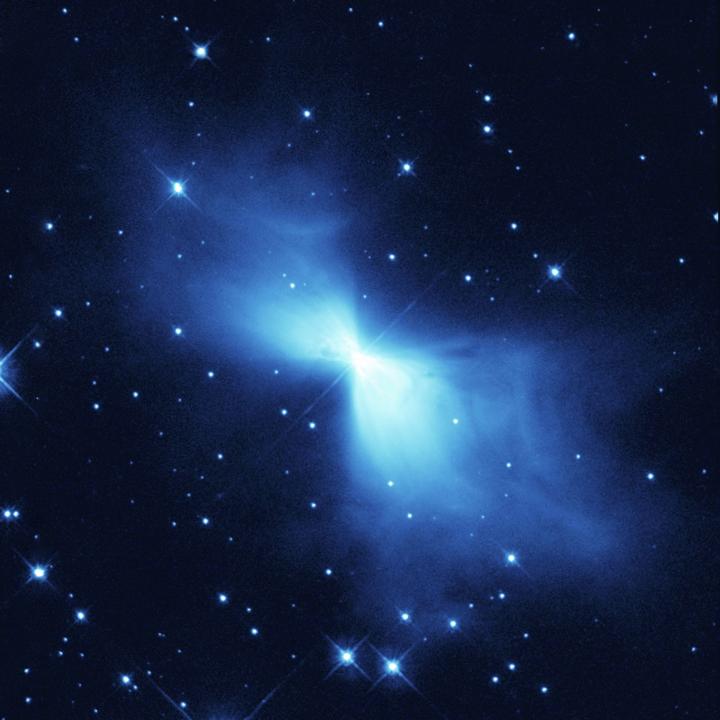Statistically, the coldest week falls about now— in late January—for most places in Europe and North America.
Some of us who live in rural areas heat with wood, which may sound romantic until you’ve done it for awhile. You grab icy logs barehanded and lug them to the house, where any remaining wrist hairs are burned off as they’re tossed in the stove.
En route, one sometimes peers up at the frosty January sky, its stars seemingly detached from our self-inflicted exercise in hot and cold abuse.
But on second thought, Orion and his friends experience the same thing. For what are we seeing in the winter sky if not an immense display of temperature extremes?

Image: Rigel, Orion’s brightest star. Credit: NASA
(Recognize the name, Rigel, from Star Trek or The Hitchhiker’s Guide to the Galaxy?)
- Giant blue stars, like Rigel marking Orion’s foot, are the hottest things the eye can see. Rigel emits the blinding brilliance of 100,000 suns. Such energy output doesn’t come cheaply. Look again in just a quarter billion years and there’ll be no sign of Rigel, for it’s squandering its resources like a giant Hummer.
- However, more typical stars emit only a sleepy 10% of the sun’s light. Using their nuclear fuel sparingly, they’ll live almost forever. Of the 100 nearest stars to Earth, 82 are of this “red dwarf” type. Yet a glance upward reveals no trace of them. They’re just too cool and dim.
So the night sky fools us with a false picture of the galaxy’s population. We merely see the lighthouses, the energy abusers. Truly typical suns are utterly invisible, a hidden majority.
The very coldest stars are black dwarfs. But nobody sees them. They emit no light. You could lie on one and feel no heat. Imagine trying to stay warm by lighting a campfire on a star’s solid surface?

Image: Boomerang Nebula, the coldest object discovered in the Universe. Credit: NASA
But for maximum cold, we’d have to go to the Boomerang nebula. Its odd expanding gases absorb space’s tiny leftover Big Bang heat, making it the coldest place in the universe. It’s just 1°C above absolute zero, where all atomic motion stops.
No comfort zone. No room temperature anywhere in the known universe. The winter sky gives the appearance of a black frozen expanse punctuated by islands of fiery hell. And that’s just how it is.
It makes our own little outings into fire and ice seem a little more bearable. They’re just a brief step away from the wonderful but unusual oasis that is our comfortable world.











